
How Stephen Gould Scaled Its Capacity by 30% without Making a Single Hire
In this article, we answer all your data catalog questions and share what you should be looking for in a data catalog tool.
Executive Summary:
In this article, we answer all your data catalog questions and share what you should be looking for in a data catalog tool.
With the advancements in the world of data, data catalogs are quickly becoming a core component of modern data management. Organizations that are already leveraging data catalogs see a significant change in the speed and quality of data access and data-driven decisions. Contrary, organizations without a data catalog who have heard of the wonders it does are often wondering: What is a data catalog? Why is the data catalog so important? What are the benefits of a data catalog? Is data catalog the right solution for our business?
In this article, we answer all your data catalog questions and share what you should be looking for in a data catalog tool. Let’s get into it:
Simply put, a data catalog is a library or inventory of all your data sets, visualizations, and dashboards. It is a place where all your data is neatly organized, indexed, and kept ready for use. It uses metadata combined with data management and search tools to help organizations manage their data and to assist data professionals to discover, understand, trust, and manage their data for governance or business purposes.
Leading research firm – Gartner defines a data catalog as follows:
“A data catalog creates and maintains an inventory of data assets through the discovery, description, and organization of distributed datasets. The data catalog provides context to enable data stewards, data/business analysts, data engineers, data scientists and other lines of business (LOB) data consumers to find and understand relevant datasets for the purpose of extracting business value. Modern machine-learning-augmented data catalogs automate various tedious tasks involved in data cataloging, including metadata discovery, ingestion, translation, enrichment and the creation of semantic relationships between metadata. These next-generation data catalogs can, therefore, propel enterprise metadata management projects by allowing business users to participate in understanding, enriching, and using metadata to inform and further their data and analytics initiatives.’’
– Gartner, Augmented Data Catalogs 2019. (Access for Gartner subscribers only.)
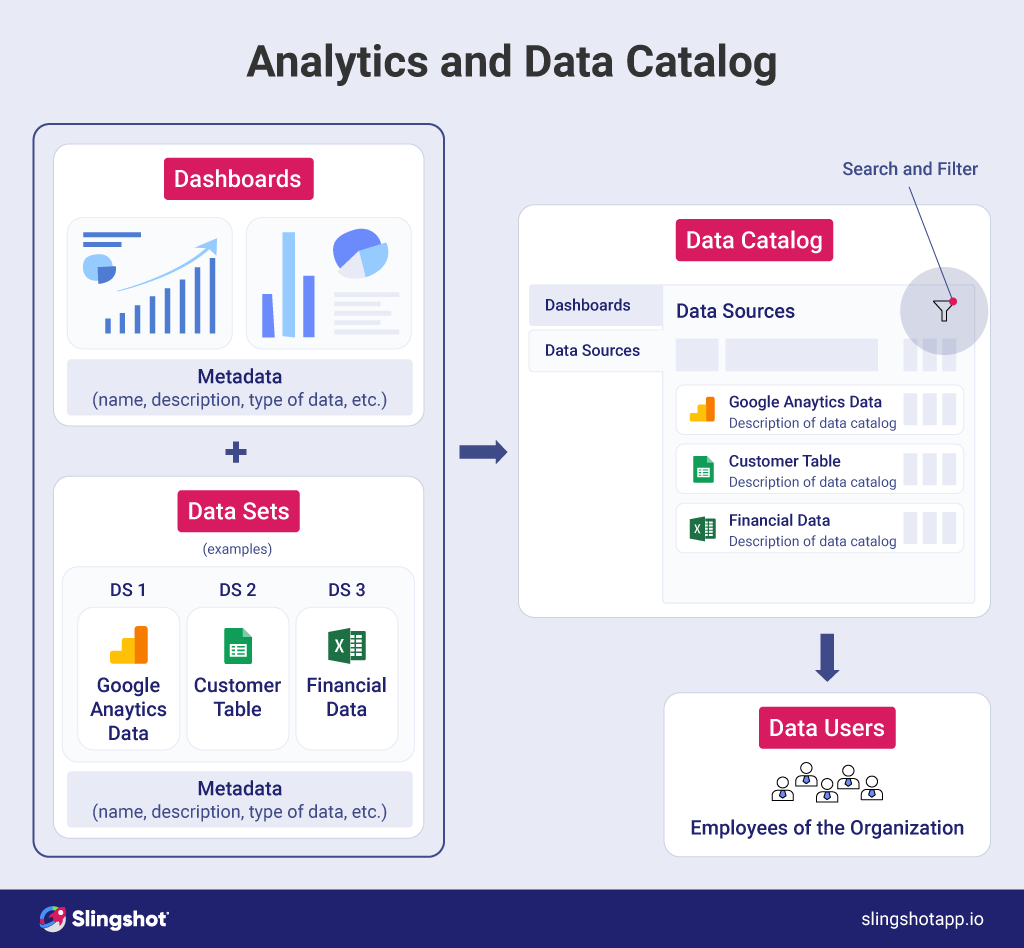
Data is a valuable asset, but only when users can understand it and transform it into meaningful information that it unlock its full potential. In the age of big data and BI, organizations can no longer afford to leave business users dependent on IT and data analyst professionals, especially given the huge volumes of data that they generate. In an organization that lacks a data solution, an IT or analyst expert typically wastes weeks trying to find, understand and validate data, and then determine the meaning and business logic behind it.
A data catalog improves this process by enabling users to easily find and access trusted data the moment they need it. Data catalogs are a single source of trusted information that gives users a view of what data the organization possesses. They are becoming essential as they are helping organizations to become data-driven and are guiding users to better understand the importance of data.
A data catalog focuses on data assets and connects the data sets within the assets with its related metadata into defined, meaningful, and searchable assets that all data consumers can easily understand and as a result accelerate time to insights and make smarter business decisions.
As organizations are struggling with data adoption and management, the benefits of a data catalog are a game-changer. Here are the primary data catalog benefits that organizations can enjoy:
Data catalogs provide users with the answers to their questions at their fingertips. Gaining a unified view of all your data across your organization allows you to easily find the right data you need and spend less time searching for it and more time analyzing it. It also helps foster collaboration among a wide range of users, including a combination of business and technical users.
This is one of the most powerful benefits of data catalogs. Data must be searchable and easily accessible, otherwise, your team could spend as much as 80% of their time looking for the data they need. And because data catalogs enhance data accessibility, your team could focus their time and efforts on useful tasks such as acting on the insights they gleaned from data analysis instead of wasting their time trying to navigate to different sources to find data.
Thanks to the available metadata, users can speed up the data discovery process up to 5 times. They can instantly see the source, who certified the data and definitions in business terms so users can understand whether the data set they found fits their purpose.
We won’t stop emphasizing the importance of organizational data-driven culture. When your team is able to access accurate data easily, they can turn it into actionable insights. Treating data as the central source of insight for any choice at any level and department is key. When everyone in your company knows that relying on data is the strategy, they start using that approach in their daily routine. А data-driven culture can help an organization make sound decisions rather quickly, which can improve the outcomes, eliminate risk, and even save money.
Perhaps the greatest value of data catalogs could be seen in the impact that it has on data analysis activities. Organizations with successful data catalog implementations can guarantee that the quality and efficiency of data analysis are substantially improved. And when data analysis is done right, it can lead to more satisfied customers, new users, higher revenue, and successful strategies.
With the right data catalog, you can not only cut your data organizational efforts in half but do so with your costs. A data catalog is an investment with real costs, but when used right to drive the decision-making process at the right time, it can save you a lot of money in the long run and even grow your profits. Software that offers data catalogs as part of their data analytics platforms can be pricey but can drastically reduce operational costs associated with building your own initial catalog.
A data dictionary is the collection of names, attributions, and business definitions for data elements and models. It also contains records about other objects in the database, such as data ownership, data relationships to other objects, and other data. Data dictionaries provide additional information about relationships between different database tables and help to neatly organize data in an easily searchable way.
So, what is the difference between a data catalog and a data dictionary?
Data catalogs typically include a data dictionary of the data assets, which means that a data dictionary can be thought of as a building block of a data catalog.
Also, a data catalog differs from a data dictionary by its ability for searching and retrieving information, its metadata, and its purpose.
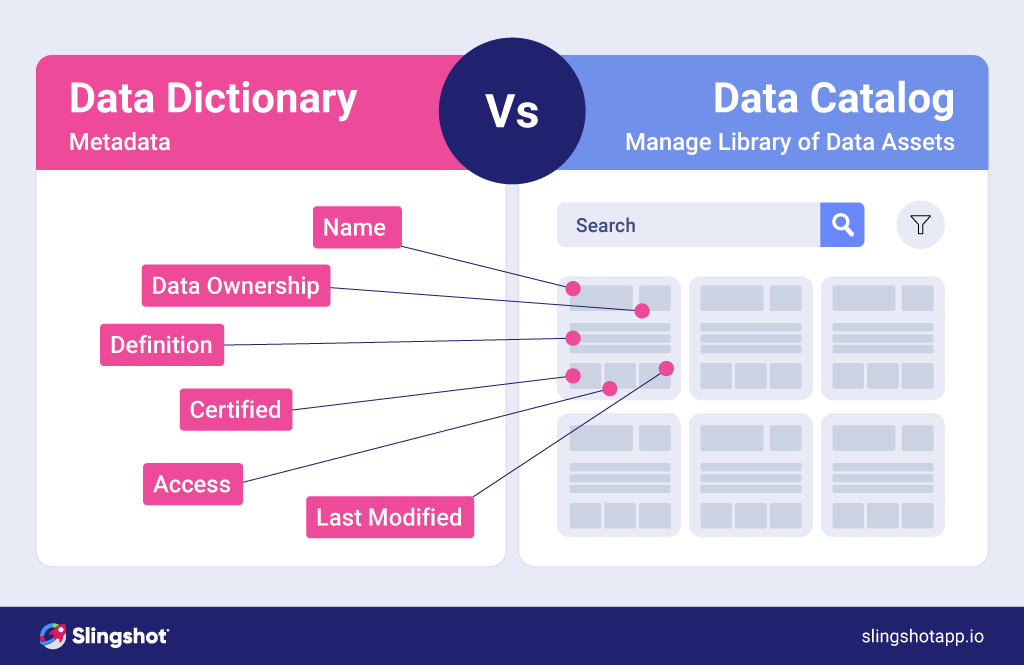
Gartner identifies three distinct subcategories of data catalogs, so you can determine which type is right for your business needs:
These data catalogs for specific vendors or tools may be delivered as part of a cloud-based data lake or data preparation tool. And although it gives businesses and data-literate people a way to easily find and analyze their data, it still has limited capabilities. Instead of having to dig through a data catalog for every data tool so you can find what you need, it’s much more optimal to have one data catalog connected to all your data sources.
Gartner defines enterprise data catalogs as “generalist, business-oriented data catalogs for broader use in information governance and infonomics – targeted at the Chief Data Officer (CDO).”
This type of data catalog is the foundation of data empowerment – it’s not just a place to index all of your information, but it also unifies your data, users, and analysis so that you can easily cultivate a data-driven culture.
As the name suggests, this type of data catalog is used primarily by data scientists and data engineers. It collects and classifies all the information in your data lakes but also has limited adaptability across the organization and doesn’t easily allow business users to access and leverage that data. As a result, building a data-driven culture becomes very difficult.
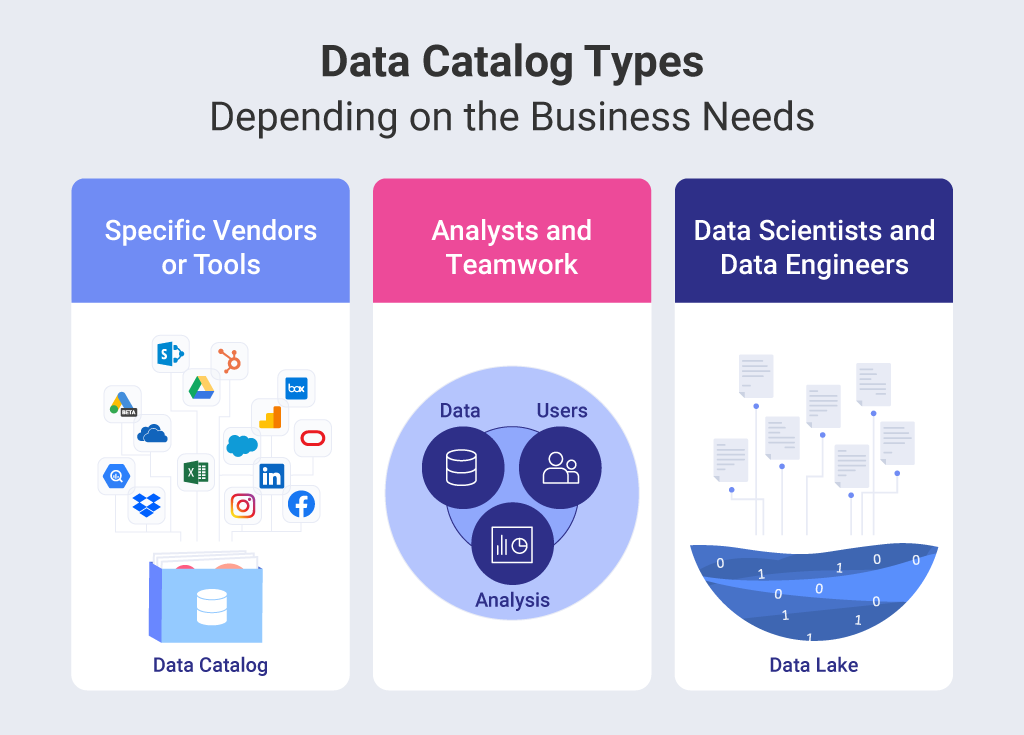
As it’s about having wider visibility and better and deeper access to data, data catalogs can be used in a variety of different ways. We present you with a few use cases of how data catalogs can be put into practice:
In many organizations, data is spread across departments and stored in various systems. As a result, organizations struggle to organize, maintain and utilize their data effectively. A data catalog can provide a central place for finding and accessing all that data. This helps users not just find the data they need, but also understand how it is used and whether it’s useful. Of course, a self-service analytics solution with data catalogs available ensures that all users can do that themselves without waiting and relying on IT. This can increase productivity and accelerate time to insight.
Another use case of a data catalog is the ability to use it to discover sensitive data that businesses may not know existed. That data can be customer details, payment information, or even passwords. That is a very useful use case for data catalogs as the last thing any business needs is to be slapped with a GDPR fine because they weren’t aware of the data they’ve been storing.
The healthcare systems are collecting an abundance of data related to patients and collected from a variety of systems, including doctor’s notes, diagnostic equipment, etc. A data catalog helps data scientists provide new services to the hospitals and healthcare facilities to support better patient care by serving as a single point of reference across the hospital for existing patient data, as well as new data sets.
The best data catalog is the one that helps make your organization become more data-driven. It should align with most of your organization’s priorities, data strategy, and projects. You need to look for a data catalog that can empower your users to get the most out of your data and make smarter decisions at the point of impact. If the data catalog can’t do that, then you better look somewhere else.
Here’s what else you should be looking for in a data catalog tool:
Data search and discovery – The main purpose of this feature is to create a system that makes data discovery and search efficient and comprehensive so that all users can derive valuable insights from the data they work with.
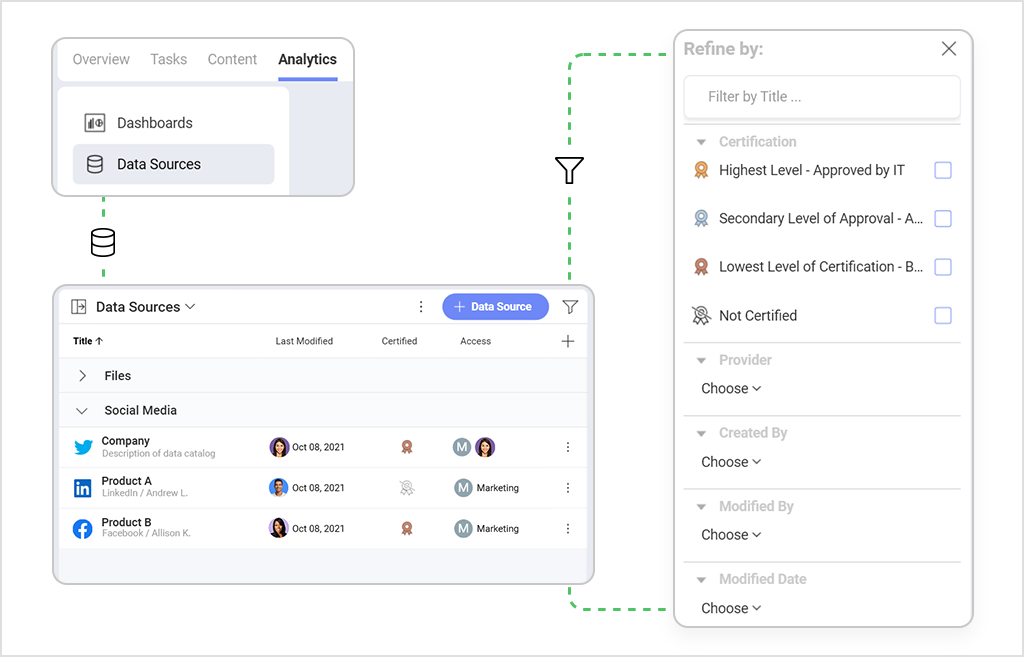
Data intelligence – A data catalog should be able to leverage AI/ML. All manual tasks that could be automated should be automated with AI and machine learning techniques to reduce the risk of human errors. More so, improve data literacy, accelerate time to accurate insights, and augment data preparation. They can also provide data recommendations to data catalog users and the users of other services in a modern data platform.
Analytics – A data catalog integrated with data analytics allows users to easily find and analyze data and catalog operations. It also provides a catalog of datasets, data analysis, and visualization features. With the right tool, advanced data operations would be also available.
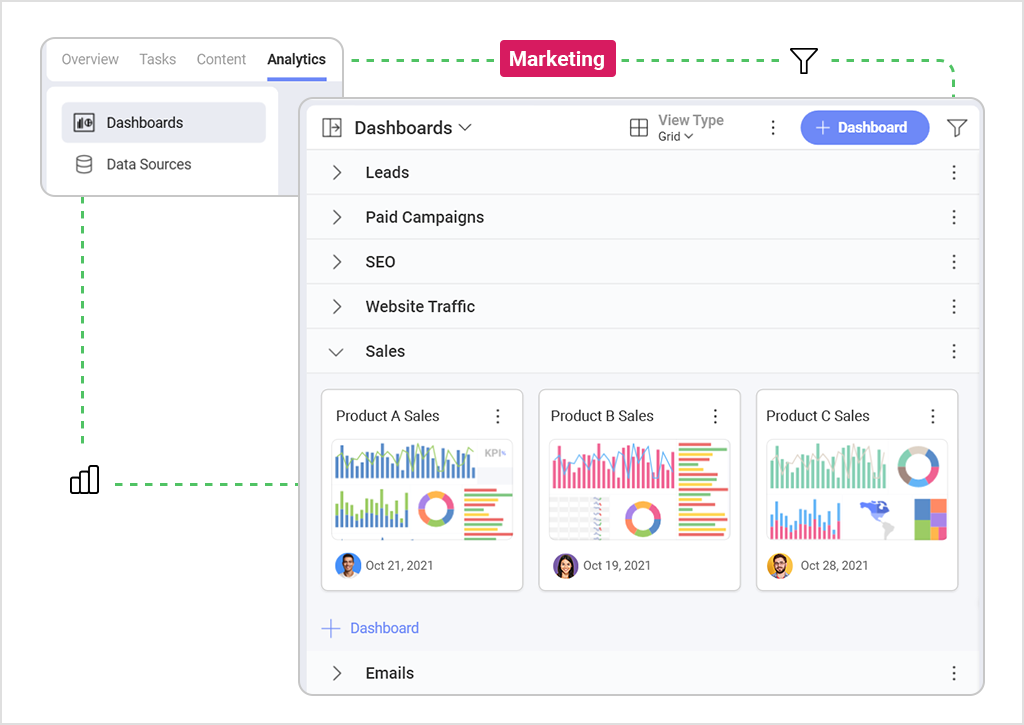
Powerful connectivity – When you’re implementing a data catalog in your organization, you should look for a tool that is able to utilize pre-built connectors to a wide variety of sources, including an open connector SDK to connect to any other source.
Collaboration – Collaboration data catalog features such as chat, discussions, etc., can help your team learn from each other and build on one another’s work. Collaboration is one of the most important things in the business environment, especially around data. Users need each other’s help and expertise, and your tools must be able to offer that, so knowledge isn’t lost in email or other tools for communication.
These are just the key features that you should be looking for in a data catalog tool, but make sure to also look for metadata curation, governance, compliance, deployment, integration, and pricing.
Slingshot makes it easier for users to be data-driven and quickly find the insights they need by providing them with an extensive catalog of analytics, data sources & sets, visualizations, and dashboards. Some of Slingshot’s data catalog functions include ML-powered automation capabilities that assist users in adding business context to technical metadata; the ability to assign roles and responsibilities to make sure assets are maintained and managed consistently by the right users; and data certification to certify datasets, metrics/KPIs, and reports to promote the highest quality of data in the data catalog.
On top of that, Slingshot is a tool that simultaneously aggregates data analytics, project and content management, chat, and goals-based strategy benchmarking – all in one, intuitive app. Thanks to the full BI engine inside it, Slingshot allows users to easily connect to your different data sources, analyze data and create beautiful yet interactive dashboards in just a few clicks.
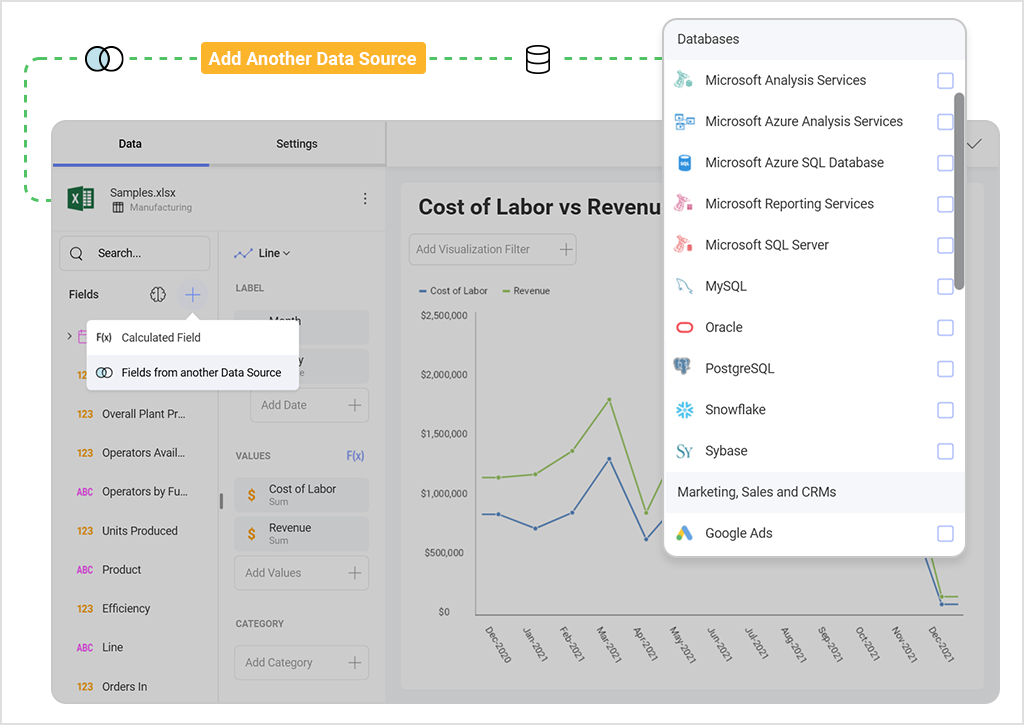
At its core, Slingshot is centered around data-driven decision-making and organizational culture. It has been designed to help teams stay on top of current data for campaigns, through dashboards, KPI tracking, and KPI indicator spreadsheets that are converted into data analytics which are then easily shared. It also offers a set of statistical functions that allow you to receive more insights from your visualizations.
Interested in learning more? Try Slingshot for free and see for yourself how it can help you leverage actionable insights all while making it easier for your team to utilize data, cultivate a data-driven culture and improve productivity.
SHARE THIS POST